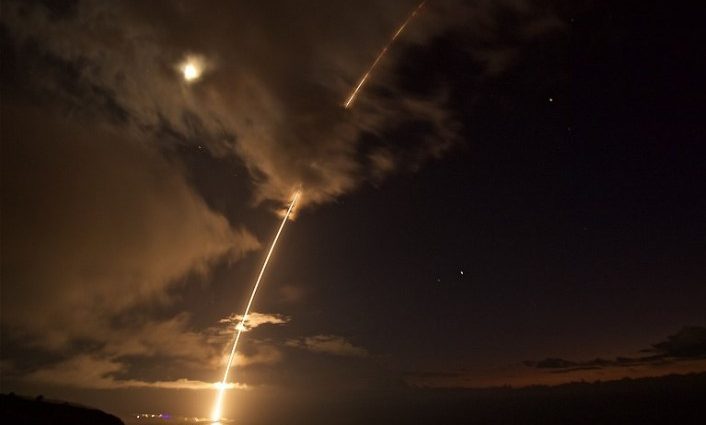Japan’s recent Optical-8 intelligence-gathering satellite launch underlines the remilitarizing nation’s growing focus on space-based security, with a particular eye on fast-evolving Chinese and North Korean missile and other military threats.
The Optical-8 was successfully launched on January 12 by Mitsubishi Heavy Industries (MHI) using the H2A rocket from the Tanegashima Space Center in southwestern Japan, according to multiple news outlets.
The Japanese Cabinet Satellite Intelligence Center and MHI confirmed that the satellite successfully separated from the rocket and settled into its intended orbit. Optical-8 can reportedly capture detailed images, though its capability is limited in severe weather.
Japan began its intelligence-gathering satellite program after a North Korean missile flew over Japan in 1998. Japan now aims to install a network of 10 satellites, some carrying radars, to spot and provide early warning for possible missile launches.
Japan has clearly taken note of the role space plays in present and will play in potential future conflicts, as modern weapons systems and command and control (C2) cannot function without space-based assets.
Japan’s June 2023 Space Security Initiative notes the role of Western commercial satellites in supporting Ukrainian resistance against Russia’s invasion, alongside the threat of China and North Korea’s intelligence, surveillance and reconnaissance (ISR) satellite programs.

The document also highlights the proliferation of anti-satellite (ASAT) capabilities such as kinetic weapons, cyberattacks and electronic warfare.
The Space Security Initiative document mentions Japan will employ ISR satellite constellations, including government and commercial satellites and those from allied countries, to tackle those rising threats.
It also states that Japan will develop a space-based missile defense system against hypersonic threats, establish a multilayered and redundant satellite communications network, enhance satellite positioning, and build large-scale and flexible satellite launch capabilities.
Optical-8’s launch is crucial to building Japan’s intelligence, surveillance, reconnaissance and targeting (ISRT), essential for its planned counter-strike capabilities.
In a June 2023 article for the Center for Strategic and International Studies (CSIS), Suzuki Kazuto notes that Japan’s 2022 National Security Strategy, 2022 National Defense Strategy and 2022 Defense Buildup Program all introduce the idea of using satellite constellations to monitor potential foreign targets.
Kazuto notes that Japan’s strategic satellite ISR previously focused on monitoring long-term changes for diplomatic and security strategies. However, he says Tokyo’s decision to acquire counter-strike capabilities to attack enemy missile bases and other targets with standoff missiles requires satellite constellations to improve space situational awareness (SSA) and information-gathering.
Kazuto also notes that satellite constellations are vital for defense against hypersonic missile threats. However, he notes that it would be difficult for Japan alone to build the required satellites to detect, identify, track and intercept hypersonic missiles.
Yasuhito Fukushima mentions in a February 2023 Stimson article that Japan’s public and private sectors could pursue a strategy to cooperate with US space companies that have the expertise to develop and operate satellite constellations. Fukushima also says it would benefit Japan to collaborate with the US on space-based ISRT.
However, Kazuto points out that the US government does not possess satellite constellation technology owned by the private sector. He notes that US-Japan collaboration on satellite constellation may result in a strange situation wherein the Japanese government collaborates with the US private sector, which would require new methods of cooperation.
Japan’s satellite constellations may also provide redundancy and resilience to their US counterparts, providing the US with alternative space-based capabilities if their systems are taken out of action.
While many satellites launch space-based positioning and navigation systems, only Japan’s Quasi-Zenith Satellite System (QZSS) is highly compatible with the US GPS. QZSS can be used in an integrated way, with both systems capable of being used as a single group of satellites.
Notably, in May 2023, the US mounted its military sensors on Japan’s QZSS satellites, augmenting the US Space Force’s space domain awareness (SDA) capabilities in areas not fully covered by US radar and telescopes.
Since QZSS can be integrated with GPS, more satellites transmitting more data means more precise location identifications and fewer positioning errors.
Despite these lofty goals and improving capabilities, Japan faces policy, operational and diplomatic challenges regarding the use of space which may impact its satellite program.
In a June 2023 article for CSIS, Saadia Pekkanen notes that the text of the 1960 US-Japan defense treaty has stayed the same, even with new and emerging space-based threats. From an international law perspective, she points out that the US-Japan alliance is still terrestrial-bound.

Pekkanen says that while the US and Japan could easily stretch Article V of the US-Japan defense treaty, they need to build interpretive clarification on just what an “armed attack against either Party in the territories under the administration of Japan” means in the context of outer space.
Pekkanen also mentions that the US and Japan need to build a common SDA architecture to enable foundational safety for space operations. She also suggests that the US and Japan can synchronize diplomacy to shape international norms regarding space security.
Pekkanen says that while Japan has supported the US in its April 2022 decision to ban destructive ASAT tests, the US could support Japan’s leading position in the Asia Pacific Regional Space Agency Forum (ARSAF), where they could craft norms through APRSAF’s National Space Legislation Initiative.

